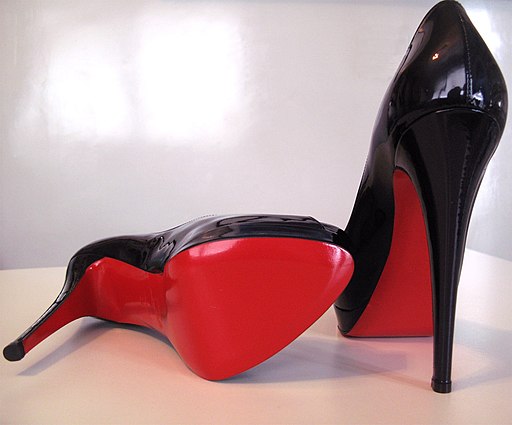You get the idea. There are probably a few culprits in your closet. Even knowing my best style, colors, and so on, I make an unwise clothing purchase here and there. It can be really difficult to pass up $5 whimsical pants that don't really go with anything else in your wardrobe (or whatever your version of this is). I find that people tend to commit the same fashion budget crime again and again. You may know that you aren't going to wear those little black dresses more than once a year, but you still collect them anyway.
One of the worst culprits for poor budgeting is shoes. How many pair do you have in your closet? How many do you wear and how often? Do you regularly choose your one or two pair of flats over a dozen heels options? A survey found that women generally only wear 1/4 of the shoes that they own, with 64% saying that a reason was the shoes aren't comfortable enough and 55% saying that the shoes were difficult to match with an outfit. 86% admitted to owning at least one pair of shoes that they've never worn. I'm not entirely opposed to buying a pair of shoes that you never wear, because some of them are more akin to art than footwear, but in that instance, please display them somewhere you can regularly enjoy their beauty.
It's really good to know what you are and aren't wearing and why. One of the ways to evaluate how well a purchase was made, is to calculate the cost per wear of the item. If you spend $600 on a coat, but wear it 200 days a year for 5 years ($600 / 1000 days), you're looking at 60 cents per wear. On the other hand, if you buy a $60 coat and only wear it twice, you're looking at $30 per wear. I had a coat given to me for free that was not particularly flattering, but served a very specific function and was worn many times and very much worth the space it took up.
Cost Per Wear:
Cost of the item divided by the number of times you've worn it
Space in your home is another cost that isn't often considered. There is a square foot value for your dwelling whether you rent a single room in a shared house or own your own mansion. The more stuff you have, the more space you pay for to simply house your stuff. If you have possessions that you aren't using, you're essentially paying a storage fee for them, because you could otherwise live in a small space. There is a limit to this of course, because even if you own nothing, you require more than 25 square feet to live in., but we're talking about space beyond need. What if you already own your dwelling, you ask? Ah, my friend, but you don't own the land. Property tax is rent you pay to the government for the pleasure of living on their land. The more things you have, the more space you need, and the amount of space you own is a factor in the calculation of taxes. Space is also involved in the calculation of the value of your home. If you have few items, but live in a big house, you could rent or sell the big home in favor of one that is a better fit for the amount of stuff that you have, and then you'll have more money for a really high quality pair of practical yet stylish boots (wonderfully low cost per wear).
Other important consideration of the value of purchasing choices are environmental and labor concerns. There is a cost to the environment (materials grown/harvested to make the garment, dyes/machinery/pollution to create the garment, planes and trucks to transport the garment, etc) and a cost of labor (humans involved in the production and transportation of the garment- Were they treated and compensated well for their labor?) to consider when you aren't buying secondhand. There are many interesting considerations bundled up in this (class, social currency, green capitalism, etc), that deserve their own articles. For the extent of this article, I'll say that it's a good value to maximize savings (cost per wear) in terms of environmental and labor concerns as well.
The point of this discussion is evaluative. I'm not interested in making rules or encouraging guilt- I'm interested in increasing beauty and making choices feel easy. If we know how much we want to spend (yearly budget, cost per wear, space for items, global considerations, time shopping, time creating outfits, time diggings through closets), then we are in a very good position for evaluating our purchasing tendencies and knowing how to budget. If we can figure out where there is room to improve our wardrobes, we can make our budgets and our lives that much better.
Stay tuned for a post on how best to budget for a wardrobe over a year.











